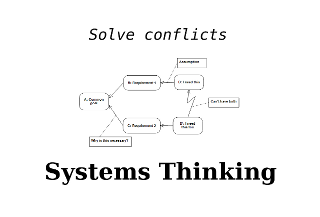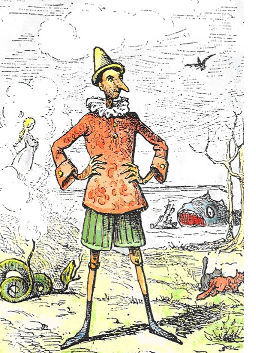|
|

Pascal will present a tryout of the “Agreeing on Business Value using Systems Thinking” session for XP Days Benelux at the Agile/XP Belgium usergroup meeting organised by Cap Gemini.
We talk a lot about “maximizing business value”. We ask business people and product managers to prioritise by estimating the business value of user stories. But what exactly do we mean by business value?
Over the past few years we’ve worked with many teams to define their “Business Value Model”, a clear definition of the value a project will bring to the organisation. The exercise hasn’t always been easy but it has always brought significant benefits:
- Measurable business value in units that impact the organization (such as revenue €€€, customer satisfaction, staff retention)
- Everybody involved was more motivated because there was a clear reason for the project and they finally understood what it was
- The whole team was aligned around one vision because we had clear criteria to define success
- We came up with more innovative solutions because everybody on the team, not only “the business” or “product managers/owners” could take product-related decisions based on the model
- We could deliver a lot faster than anybody expected because the Business Value Model allowed us to easily distinguish between value-adding and non-value-adding features
- We spent a lot less time writing and prioritising user stories because we were able to derive the user stories from the value definitions
- The Business Value Model guided us to explore new product ideas: the business value model was a hypothesis that we could test and refine each time we released or performed user testing.
In this interactive tutorial you’ll apply some Systems Thinking techniques, such as the Diagram of Effects and Intermediate Objectives Map) to define the business value model of an example project. We’ll show you the techniques we used and discuss how you can apply those techniques in you context so that you’ll be ready to start building a business value model with your team.
Agenda:
- 18:00 – 19:00 – Welcome with snacks and drinks
- 19:00 – 21:00 – Session
Address: Bessenveldstraat 19, B-1831 Diegem, Belgium
Register here for this free event.
Portia will co-present a new Agile Fairytale, “The Emperor’s New Clothes – Meaningful Interactions in Stressful situations” with Jenni Jepsen on 25-26 November at the XP Days Benelux 2010 conference in Heeze, near Eindhoven, The Netherlands.
The Emperor is parading in his new clothes! See him in all his glory! Which role will you play? The mischievous weaver who robs the kingdom and sells the Emperor his birthday suit? Or the obsequious minister who assures the Emperor his bottom doesn’t look big in it? Or the innocent child who tells it like it is? We all interact with different types of characters in our daily lives which may give rise to stressful situations.
Together we will learn how to communicate better with others, especially at times of stress, by transforming our behaviour from incongruence to congruence. We will learn to recognise incongruence by role-playing the 4 Coping Stances, based on the Satir Model, then learn how to transform our behaviour from one of incongruence to congruence (the fifth stance) by thinking about interactions in terms of Self, Other and Context.
Portia and Pascal will present “Agreeing on Business Value using Systems Thinking” at the XP Days Benelux 2010 conference on 25-26 November 2010 in Heeze, near Eindhoven, The Netherlands.
We talk a lot about “maximizing business value”. We ask business people and product managers to prioritise by estimating the business value of user stories. But what exactly do we mean by business value?
Over the past few years we’ve worked with many teams to define their “Business Value Model”, a clear definition of the value a project will bring to the organisation. The exercise hasn’t always been easy but it has always brought significant benefits:
- Measurable business value in units that impact the organisation (such as revenue €€€, customer satisfaction, staff retention)
- Everybody involved was more motivated because there was a clear reason for the project and they finally understood what it was
- The whole team was aligned around one vision because we had clear criteria to define success
- We came up with more innovative solutions because everybody on the team, not only the “business” or “product” managers/owners could take product-related decisions based on the model
- We could deliver a lot faster than anybody expected because the Business Value Model allowed us to easily distinguish between value-adding and non-value-adding features
- We spent a lot less time writing and prioritising user stories because we were able to derive the user stories from the value definitions
- The Business Value Model guided us to explore new product ideas: the business value model was a hypothesis that we could test and refine each time we released or performed user testing.
In this interactive tutorial you’ll apply some Systems Thinking techniques, such as the Diagram of Effects and Intermediate Objectives Map, to define the business value model of an example project. We’ll show you the techniques we used and discuss how you can apply those techniques in your context so that you’ll be ready to start building a business value model with your team.
Pascal will present “Lean out your product backlog with lean product development and business analysis techniques” at the Lean & Kanban Europe 2010 conference.
The session will show how using business analysis and kanban techniques we can create a flow from business goals to implementable user stories with acceptance test, focus on value-delivering capabilities and involve the whole team in product development.

Portia and Pascal will present “Resolve conflicts without Compromise” at the Mini SPA 2010 conference on September 10th 2010 in London. This session is a shorter tutorial version of the workshop that was run earlier this year at the SPA conference. In the session,we go through several applications of the Conflict Resolution Diagram with session participants. We expect that many participants will get ideas to start tackling a conflict in their life or work. You can read more about the Systems Thinking tools we use on this site.
The conference is free, but you need to register.
See you there!

 Portia Tung and Pascal Van Cauwenberghe will co-present the “Coaching with the Wizard of Oz” Agile Fairytale at the Swiss XP Day in Geneva on March 29th. Portia Tung and Pascal Van Cauwenberghe will co-present the “Coaching with the Wizard of Oz” Agile Fairytale at the Swiss XP Day in Geneva on March 29th.
Apprenez les techniques de coaching avec le magicien d’Oz
Pour pouvoir aider les autres (et soi-même) avec du coaching il faut mettre en pratique quatre activités :
- Poser les bonnes questions
- Écouter ce qui est vraiment dit
- Observer ce qui se passe vraiment
- Donner le bon feedback au bon moment
Le coaching est simple, mais pas facile. Quelque soit votre rôle dans l’équipe, ces techniques seront utiles pour améliorer chaque jour. Apprenez quelques techniques de coaching et mettez-les en pratique. Les personnages du Magicien d’Oz vous aideront sur la longue route de brique jaune vers la cité d’Émeraude.

 Portia Tung and Pascal Van Cauwenberghe will co-present a tutorial on Agile Project Management at the Swiss XP Day in Geneva on March 29th. Portia Tung and Pascal Van Cauwenberghe will co-present a tutorial on Agile Project Management at the Swiss XP Day in Geneva on March 29th.
La gestion de projet agile en pratique
Est-ce qu’il y a des chefs de projet dans un projet agile ? Qu’est-ce qu’ils font ? Quelle est la différence avec un Scrum Master ? Quelle est la différence entre la gestion de projet « agile » et la gestion de projet « normale » ? A travers des présentations, jeux et exercices nous vous proposons un ensemble d’outils et techniques que vous pourrez appliquer dès demain pour améliorer le déroulement et les résultats de vos projets.
Pinocchio: On Becoming a Lean Leader
Portia Tung and Pascal Van Cauwenberghe will co-present the opening keynote “Pinocchio: On Becoming a Lean Leader” at the Agile Turku Day 2010 in Turku, Finland on March 17th 2010.
Come and play with us to sharpen your leadership skills!

Pinocchio by Enrico Mazzanti (1852-1910) – the first illustrator (1883) of Le avventure di Pinocchio. Storia di un burattino – colored by Daniel DONNA (via Wikimedia Commons)
|







